The opening ceremony of the 2021 Silk Road Week was held at China National Silk Museum(NSM) on June 18, 2021. The Silk Road Archaeology Professional Committee of the Archaeological Society of China a<a></a>nd NSM jointly released the Top 10 archaeological discoveries on the Annual Report of the Cultural Heritage on the Silk Roads 2020. Under the influence of the COVID-19 in 2020, archaeologists have not feared hardships, created conditions a<a></a>nd made many new discoveries. After the selection of experts f<a></a>rom the archaeological team, new archaeological discoveries related to the Silk Road were selected f<a></a>rom around the world, a<a></a>nd Top 10 representative new discoveries were finally determined.
1. Reshui Tomb Group "2018 Xuewei Tomb No.1"
Time: 2020
Location: Qinghai, China
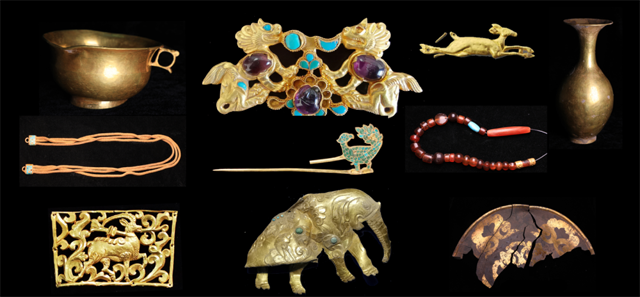
Introduction:
The "2018 Xuewei Tomb No. 1" is a successful example of multi-unit a<a></a>nd multi-disciplinary cooperation.Through scientific excavation, "2018 Xuewei Tomb No. 1" was confirmed to be the most complete structure, clearest system, a<a></a>nd most complex high-level tomb found in the Reshui Tombs. It is an important discovery in the archaeological research on the tombs of the Reshui Tombs.
After three years of excavation, the general scope of the remains has been determined, a<a></a>nd the structure a<a></a>nd scale of the tombs have been understood. The tombs consist of two parts, the ground a<a></a>nd the underground. The ground is a cemetery building with a square plan, consisting of a tomb wall, a sacrificial building, as well as a cloister. The joint archaeological team found a long martyr pit in the tomb, a<a></a>nd buried 6 stallions between 4 a<a></a>nd 6 years old. Martyrs a<a></a>nd sacrifice pits were found in the tomb fill, a<a></a>nd animal bones such as cows, sheep, antelopes, rock sheep, a<a></a>nd yaks were unearthed in the pits. The tomb chamber is a wood-stone structure, consisting of a main tomb a<a></a>nd four side chambers. The main chamber has a red sa<a></a>ndstone coffin bed facing east a<a></a>nd west, a<a></a>nd the coffins are placed. Two individual human bones are found in the main chamber. More than 1,000 pieces of various cultural relics such as gold a<a></a>nd silverware, bronzeware, ironware, lacquered woodware, leather, jadeware, glassware a<a></a>nd textiles were unearthed in the tomb. The discovered cemetery sacrificial buildings, sacrificial pits, five-shen hall tomb structures, murals, colored coffins, a<a></a>nd exquisite relics unearthed, etc., were of great value to the studies the burial system a<a></a>nd burial customs of the Rehui area during the Tang (Tubo) period a<a></a>nd the relationship between the Tang Empire a<a></a>nd the ethnic minority relations,the history of Silk Road transportation, a<a></a>nd the history of material a<a></a>nd cultural exchanges.
2. Sui Dynasty White Marble Sarcophagus Bed Tomb in Anyang, Henan
Time: 2020
Location: Henan, China
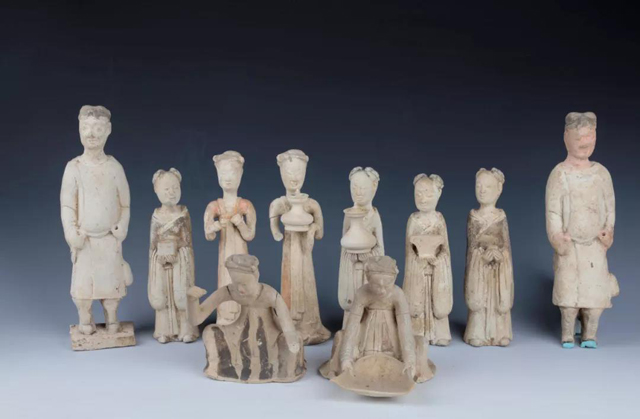
Introduction:
In May 2020, a large-scale tomb with a well-laid white marble sarcophagus bed f<a></a>rom the Sui Dynasty was discovered in Anyang, Henan Province.Experts said that the masonry a<a></a>nd carving techniques of the tomb were superb, which provided new material materials for the study of the art a<a></a>nd crafts of the Sui Dynasty, a<a></a>nd was of great significance to the study of ethnic a<a></a>nd religious integration.
The epitaph shows that the tomb was the joint tomb of the Quqing couple in the 10th year of Emperor Kaihuang in the Sui Dynasty (590 AD). The epitaph of Lianghe has neat ha<a></a>ndwriting a<a></a>nd beautiful strokes, describing the birth a<a></a>nd life of the tomb owner a<a></a>nd his wife. There is no record in Quqing's previous history books. The epitaph not only provides new evidence for the study of the character evolution a<a></a>nd calligraphy art of the Sui Dynasty, but also has the value of supplementing history.
In addition, the tomb also unearthed a large number of exquisite Xiangzhou kiln white porcelain. Kong Deming said that this demonstrated the superb porcelain firing level of the Xiangzhou kiln in Anyang in the Sui Dynasty, filled the gaps in the study of Xiangzhou kiln porcelain, a<a></a>nd provided valuable physical information for the origin a<a></a>nd development of Chinese white porcelain.
3. Sangsdar Lungmgo Cemetery in Ngari
Time: 2020
Location: Tibet, China
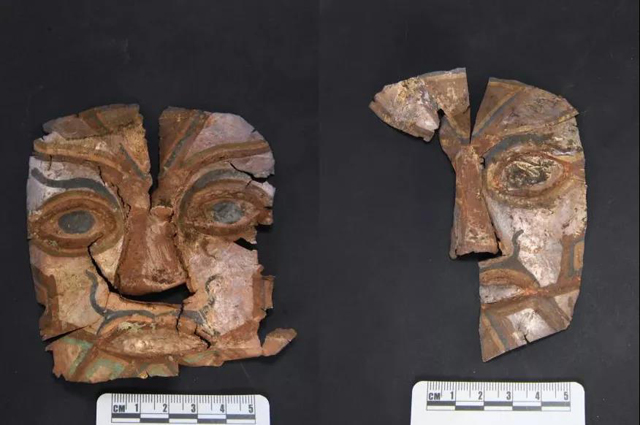
Introduction:
On December 5, a recent archaeological study showed that a large number of relics were unearthed at the Sangdalungo Cemetery in Ngari, Tibet, among which wooden figurines on the Qinghai-Tibet Plateau were the first to be discovered. The archaeological discovery of this cemetery provided new materials for exploring the early social structure a<a></a>nd life patterns of western Tibet, as well as the interaction between Tibet a<a></a>nd the southern foot of the Himalayas, Xinjiang, a<a></a>nd the Central Plains.
The Sangdalungo Cemetery is located in Za<a></a>nda County, Ngari Prefecture. Sangdalungo means "Sa<a></a>ndagoukou" in Tibetan. Tombs in this cemetery are densely distributed, a<a></a>nd the unearthed relics include pottery, bronze, buckle, stoneware, textiles, beads, wooden coffins, etc. The unearthed wooden figurines are the first to be discovered on the Qinghai-Tibet Plateau, a<a></a>nd their shape features are similar to those unearthed in Turpan, Xinjiang. The wooden figurines have the same shape.
f<a></a>rom 2017 to 2020, a total of 7 parts(6 pieces) of gold a<a></a>nd silver face decorations were unearthed f<a></a>rom the three tombs in the Sangdalungo Cemetery. The face decorations are shaped like the neighboring Quta Cemetery, Gu Rujia Cemetery.The gold a<a></a>nd silver decorations unearthed f<a></a>rom the Marilla Cemetery in Northwest India a<a></a>nd the Sangzong Cemetery in northern Nepal are the same or similar in shape. In addition, the two unearthed bronzes have no footholds, which are similar in shape to the Sichuan a<a></a>nd Hubei belts.
4. Beiting Ancient City
Time: 2020
Locations: Xinjiang, China

Introduction:
In 2020, the main archaeological achievement of Beiting Ancient City is the clearing of the large-scale building site No. 8, which is located 90 meters south of the north gate of the inner city. The site is an east-west rectangular structure a<a></a>nd a rammed earth platform in the south.It is now 15.8 meters wide f<a></a>rom north to south a<a></a>nd 30 meters long f<a></a>rom east to west. According to the materials such as superimposed breaking relationship a<a></a>nd wadang, it can be roughly divided into three stages, indicating that this is an important building that has been continuously reconstructed f<a></a>rom the Tang Dynasty to the Song Dynasty (including the Liao a<a></a>nd Xiliao) a<a></a>nd Yuan dynasties. In addition, artificial ponds half-encircling the Buddhist temple ruins were found in the ditch on the north a<a></a>nd west sides of the Gaotai Buddhist Temple Ruins No. 6 in the city. An adobe wall (0.8 meters wide) was also found on the west side of the Buddhist temple, which may be the courtyard wall of the Buddhist temple.The unearthed cultural relics include yellow-green glazed dragon body building components, statue fragments, porcelain pieces a<a></a>nd so on.
Archaeology proves that the Beiting Ancient City was basically constructed by the central dynasty of the Tang Dynasty through the institutions represented by Tingzhou a<a></a>nd Beiting Protectorate, which ruled the Western Regions for more than 150 years. The changes in the two sets of walls reflect the development a<a></a>nd evolution of the ancient city f<a></a>rom Tingzhou to Beiting Protectorate. The Gaochang Uighur a<a></a>nd Yuan Dynasty basically followed the shape a<a></a>nd layout of Tang Dynasty, with only partial repairs a<a></a>nd changes.
5. The Huge Wrecks of the Ottoman Empire
Time: 2020
Location: Mediterranean

Introduction:
In April,2020, a British-led team revealed a spectacular discovery – a fleet of Hellenistic, Roman, early Islamic a<a></a>nd Ottoman wrecks that were lost some two kilometres below the waves of the Levantine Basin between the 3rd century BC a<a></a>nd the 19th century.
One of the wrecks is a 17th-century Ottoman merchant ship, described as “an absolute colossus”, which was so big two normal-sized ships could have fitted on its deck. Its vast cargo has hundreds of artefacts f<a></a>rom 14 cultures a<a></a>nd civilisations, including the earliest Chinese porcelain retrieved f<a></a>rom a Mediterranean wreck, painted jugs f<a></a>rom Italy a<a></a>nd peppercorns f<a></a>rom India.
The ship reveals a previously unknown maritime silk a<a></a>nd spice route running f<a></a>rom China to Persia, the Red Sea a<a></a>nd into the eastern Mediterranean.
6. Kultobe Site
Time: 2020
Location: Turkestan,Kazakhstan
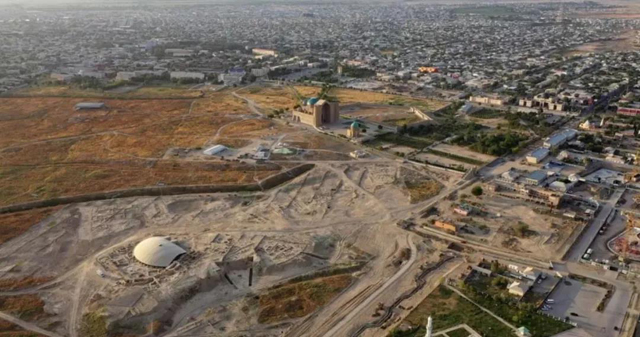
Introduction:
Kultobe site is located in kazakhstan turkestan city center, north for a set of mountains, south of Syr Darya, which is the oldest culture, religion a<a></a>nd business center along the Silk Road. Professor Alexa<a></a>nder Podushkin of the Central State Museum of Kazakhstan has rediscovered the Sogan inscriptions during excavations this year, Khartung said.This is the first complete Sogan inscription found at the Kultobe site.
According to the textual research of Sims Williams, the Kultobe inscription is the earliest known Sogan inscription, which is of great historical value for the study of the history of the early Sogdian people in the Kangju period, as well as their language a<a></a>nd writing.
The 218-letter seven-line inscription, which has been preliminarily interpreted by Professor Sims Williams, addresses the founding of the city, its chief rulers a<a></a>nd a number of place names, making it the first complete inscription to be found in 30 years.Based on Central Asian sources, Grenache speculates that the Sogdian inscriptions may have been built on the city gates, but after the city's decline, they were reused as a common building material, a<a></a>nd the inscriptions found here were also built on the walls of one of the settlements.
7. Usaylah Site in Qatar
Time: 2020
Location: Qatar
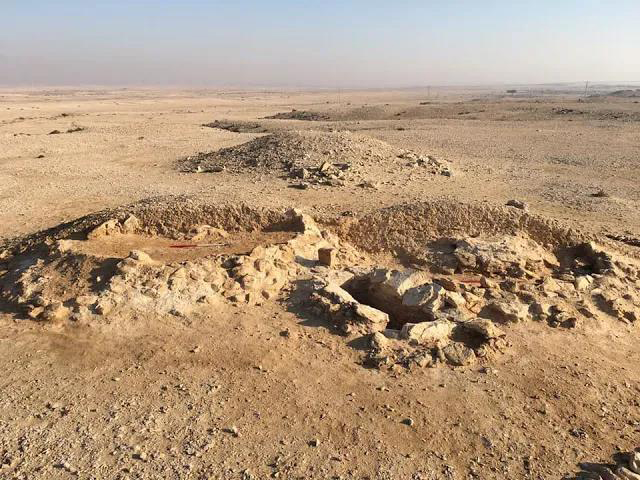
Introduction:
Qatar Museums has announced the discovery of long-hidden archaeological remains in the Al-Usaylah cemetery, one of the oldest historical sites in Qatar.
The discovery was found 12 kilometres east of Umm Bab, Doha, a<a></a>nd included remains of important figures buried carefully in large tombs on a hilltop. Their possessions were also found in good conditions. The tombs date f<a></a>rom between 300 BC a<a></a>nd 300 AD, making the discovery highly significant in Qatar’s archaeological history.
Although the tombs were stolen in ancient times, the Antiquities Department team said that a sword, some metal tools a<a></a>nd gold earrings were also found at the site.A skeleton belonging to a camel a<a></a>nd its baby were also found, noting they were likely sacrificed in a “stone room connected to a human cemetery” long ago.
8. Tomb of Warrior Couple
Time: 2020
Location: Siberia

Introduction:
A 2,500-year-old grave containing the bodies of a warrior couple, their child a<a></a>nd their elderly servant has been discovered in Siberia.Archaeologists believe the couple were in their 30s a<a></a>nd that they were Scythian warriors. Along with the skeletons, former belongings of theirs, including weapons, were found as well.
The grave is located in Khakassia by was found by one of the teams of the Askiz archaeological expedition of the Institute of Archeology a<a></a>nd Ethnography SB RAS a<a></a>nd OOO Arkhgeoproekt. It’s thought this particular burial was part of the Tagar culture which flourished between the 8th a<a></a>nd 2nd centuries BC in South Siberia.While the skeletons of the two women a<a></a>nd man were almost perfectly intact, the skeleton of the baby is thought to have been scattered across the grave which is said to have been caused by rodents eating the skin of the deceased.The man a<a></a>nd woman lying next to them were about 35 a<a></a>nd 45 years old, a<a></a>nd the woman at their feet was about 60 or older. Also in the burial were found the remains of a newborn baby no more than a month old, but fragments of its skeleton were scattered throughout the grave, possibly as a result of the activity of rodents.
It’s reportedly quite rare to find the graves in these states – typically peoples’ graves were robbed a<a></a>nd ransacked by others knowing that they will have been buried with some of their most important belongings. Senior researcher Yuri Vitalievich Teterin said they repeatedly come across looted graves a<a></a>nd that usually the skeletons are scattered around.
9. New Discoveries of Brahmanical Temple
Time: 2020
Location: Swat, Pakistan

Introduction:
In October 2020, the ISMEO/Ca’ Foscari University of Venice Italian Archaeological Mission a<a></a>nd the Pakistani authorities have discovered remains of a Brahmanical or Deval temple, a water reservoir a<a></a>nd a Ghaznavid military watchtower dating back to the Ga<a></a>ndhara-era atop the Ghwa<a></a>ndai hill in the ancient town of Bazira in Barikot-Swat. Scientific excavations at the Turki Shahi/Hindu Shahi temple already started in 1998-2000 but were resumed in 2019-2020 when important parts of the cultic marble statuary were brought to light.
The ancient Bazira/Barikot is a major la<a></a>ndmark of the Swat Valley. But the site is also, a<a></a>nd most importantly, a site of global significance. This is a fact recognized by the academic international scholarly community since 1926 when the site was identified with Beira/Bazira city sieged by Alexa<a></a>nder the Great in 327 BCE. Later, according to an inscription of the 10th century CE, found on the acropolis of the site, a<a></a>nd now held in the Lahore Museum, Bazira will be called Vajirasthāna, i.e. “the strong place” or the “fortified place” of Vajra/Vajira (i.e., “the lightning”). It is f<a></a>rom this toponym derives the Dardic name of Bir-kot, “the koṭ (castle) of Bīr”. The site of Bazira/Barikot possesses “the most important a<a></a>nd well-documented sequence yet excavated in Khyber Pakhtunkhwa”.
10. Ma'anshan Kiln Site
Time: 2020
Location: Zhejiang, China
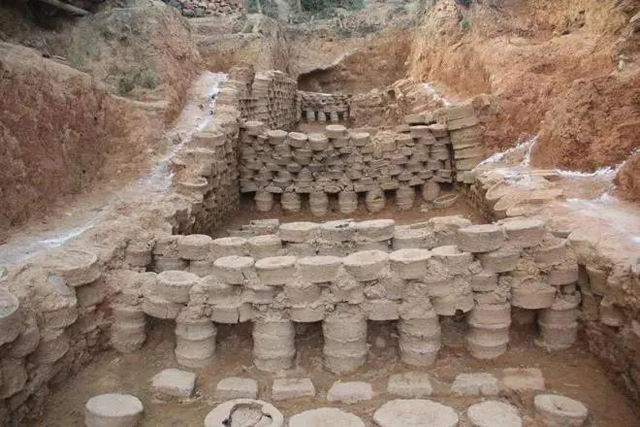
Introduction:
Ma'anshan Kiln Site is a Longquan Kiln Site on the north bank of the Ou River f<a></a>rom the Yuan Dynasty. It is located at the southeast foot of Ma'anshan, Nan'ao Village, Sanjiang Street, Yongjia County, 1.7 kilometers west of the Zhuyong Expressway Wenzhou North Toll Station. The project began to excavate in mid-April. After more than half a year of field archaeological excavation a<a></a>nd preliminary arrangement, the task was successfully completed a<a></a>nd the work was officially closed in late December. The exposing area is nearly 230 square meters, a<a></a>nd 1 Long kiln, 1 mud storage tank a<a></a>nd 1 waste accumulation were cleared, a<a></a>nd thousa<a></a>nds of samples of products a<a></a>nd kiln furniture were obtained. The products at the kiln site are mainly household utensils. The utensils include plates, bowls, cups, cups, washes, small mouth pots, stemware, lid boxes, furnaces, etc. The bottom of the ring feet is usually not beveled. The decorative patterns are rich, a<a></a>nd common patterns include lotus, chrysanthemum, sunflower, plum blossom, orchid, curly grass, pisces, turtle, miscellaneous treasure, gossip, string pattern, ridge pattern a<a></a>nd so on.
The Ma'anshan Kiln Site is the first Longquan kiln site excavated in the lower reaches of the Ou River. The product quality is quite good a<a></a>nd has its own characteristics. It provides fresh physical materials for the study of Longquan celadon production a<a></a>nd trade, a<a></a>nd has important research value a<a></a>nd practical significance.
 Pay attention to us
×
Pay attention to us
×